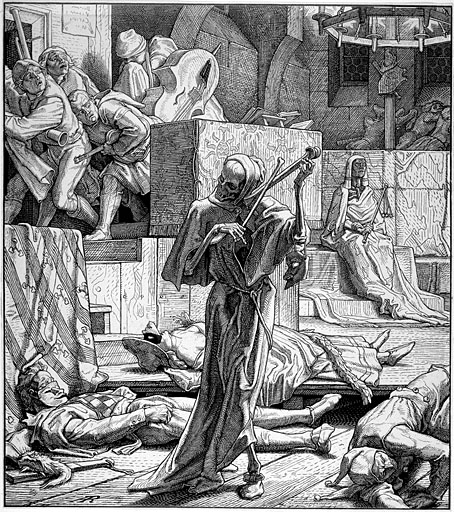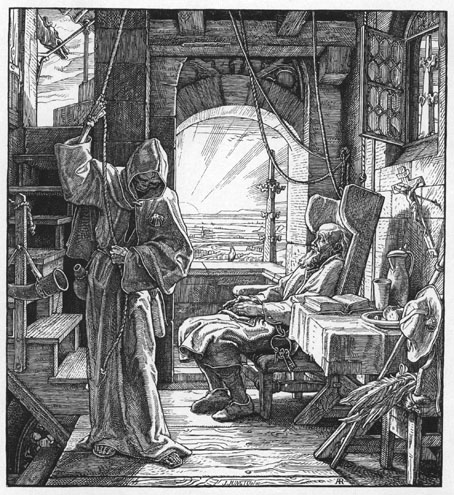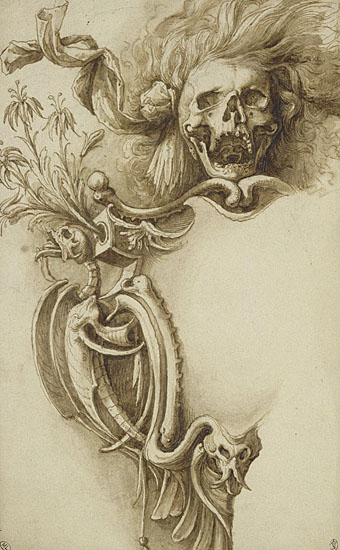Der Tod als Erwürger (1851) by Alfred Rethel.
The Danse Macabre seems to be a theme of the month given recent postings at BibliOdyssey, Wurzletod and 50 Watts. In addition to posting examples, BibliOdyssey points the way to some original sources at Düsseldorf, four of them books that feature engravings by German artist Alfred Rethel (1816–1859). (All four books appear to be the same works, unfortunately.) The pictures here are later Rethel pieces that are a lot more detailed, and may well be the last things the artist had published. A note at the British Museum (where a larger copy of the first picture can be seen) states that Rethel was “Insane since 1853”.
Der Tod als Freund (1851) by Alfred Rethel.
Elsewhere on { feuilleton }
• The etching and engraving archive
Previously on { feuilleton }
• The art of Jacopo Ligozzi, 1547–1627
• Massachusetts memento mori
• Skull cameras
• Walmor Corrêa’s Memento Mori
• The skull beneath the skin
• Vanitas paintings
• Very Hungry God
• History of the skull as symbol



